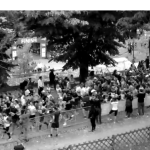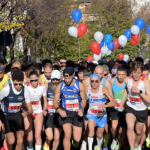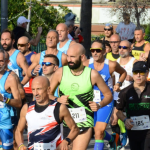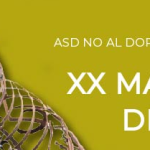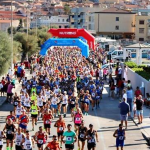Some flavonoids provide stress protection, for instance, appearing as scavengers of free radicals such as reactive oxygen species (ROS), as well as chelating metals that generate ROS by way of the Fenton response (Williams et al., 2004). Flavonoids are additionally concerned within the resistance to aluminum toxicity in maize. The putative health-protecting capabilities of flavonoids have stimulated important research towards the elucidation of their biosynthetic networks, in addition to the development of production platforms using genetically tractable hosts. Different strategies have been utilized to the modification of the flavonoid pathway, such as antisense, ?????? ????? ????? sense suppression (co-suppression), and RNAi for the down-regulation. There was a pointy and rapid up-regulation of genes encoding enzymes concerned within the phenylpropanoid pathway, in particular for the synthesis of isoflavones and isoflavanones (Samac and Graham, 2007). The responses of soybean to avirulent and virulent strains of the bacterial pathogen P. syringae pv. Sustained up-regulation of genes involved in the phenylpropanoid metabolism has been associated with R-gene-mediated resistance responses in M. truncatula responding to foliar pathogens.
MYB transcription elements concerned in the regulation of flavonoid biosynthetic genes. Many R2R3 MYB transcription elements were first identified from a number of mannequin plants, such as maize, Antirrhinum, petunia, and Arabidopsis. Studies in a variety of species, equivalent to Ligustrum vulgare, Vitis vinifera, petunia, and Arabidopsis have offered new evidence that UV gentle induces the synthesis of flavonol compounds (Ryan et al., 2002; Berli et al., 2010; Stracke et al., 2010; Agati et al., 2011; Kusano et al., 2011). Because the presence of the OH group in the 3-position of the flavonoid skeleton is the principle structural function accountable in chelating metallic ions such as iron, copper, zinc, aluminum, and hence, inhibiting the formation of free radicals as well as to scale back ROS as soon as formed, it was steered that flavonols would possibly play yet uncharacterized roles in the UV stress response (Verdan et al., 2011). Furthermore, grass species similar to Deschampsia antarctica, Deschampsia borealis, and Calamagrostis epigeios that develop in areas with elevated ranges of photo voltaic UV-B radiation have high constitutive ranges of flavonoids just like the flavones orientin and luteolin, that protect plants against this stress condition (Van De Staaij et al., 2002). Similarly, maize plants growing at high altitudes accumulate C-glycosyl flavones in leaves, maysin and its biosynthetic precursor rhamnosylisoorientin, flavones commonly present in silks, as a mechanism that prevents injury caused by high UV-B publicity (Zhang et al., 2003; Casati and Walbot, 2005). FLS genes are regulated by UV-B radiation in each high-altitude landraces and low-altitudes inbreds of maize.
Recent findings illustrate the complexity of regulatory networks that control flavonoid biosynthesis in Arabidopsis and different species. A precursor is equipped to a mutant that is blocked in the early stage of the biosynthesis of a pure product. Other examples of combinatorial biosynthesis are the production of 5-deoxyflavanones, a natural raspberry ketone, and anthocyanin in E. coli (Beekwilder et al., 2007; Yan et al., 2007, 2008). The genetic design used was an synthetic phenylpropanoid pathway assembling enzyme from numerous organisms in E. coli, and adding additional modification enzymes. Table Table11 exhibits examples of MYB transcription elements that regulate flavonoid biosynthesis. Some further examples of engineering of the flavonoid biosynthesis pathway and the phenotypes obtained are described in Table Table22. These transcription components are involved in the regulation of the flavonoid biosynthesis pathway. Thus, it is urged that the other regulation of those branches enhances production of isoflavones that act as antioxidants and telegram marihuana antimicrobial compounds vs. The increasing availability of plant genomes has allowed the identification and isolation of a lot of MYB genes involved in the regulation of flavonoid biosynthesis from various non-mannequin plant species resembling grapevine (Vitis vinifera), strawberry (Fragaria x ananassa), apple (Malus domestica), cauliflower (Brassica oleracea var botrytis), potato (Solanum tuberosum L.), bayberry (Myrica rubra), mangosteen (Garcinia mangostana L.), pear (Pyrus pyrifolia), and purple kale (Brassica oleracea var.
Phenylpropanoids are found throughout the plant kingdom, the place they function important elements of plenty of structural polymers, present protection from ultraviolet mild, defend against herbivores and pathogens, and also mediate plant-pollinator interactions as floral pigments and scent compounds. According to the phytochemical co-evolution principle, the secondary metabolites are likely an important mediators of plant-insect interactions. The induction of UV-absorbing chemicals is shared with plant responses to different stresses, comparable to herbivore or pathogen assault, and this induction may act either positively or negatively on the degrees of phytochemical manufacturing. For example, the co-expression of the Delila (Del) and ??? ????? Rosea1 (Ros1) cDNAs, each under the control of the fruit-specific E8 promoter, led to excessive levels of anthocyanin all through the fruit tissues, which have been consequently purple coloured (Butelli et al., 2008). This consequence demonstrates that the anthocyanin biosynthetic pathway might be totally switched on in fruits if activated appropriately. The three major ???? ???? ?????? ????? anthocyanins pelargonidin, cyanidin, and delphinidin, contribute to orange to crimson, red to magenta, and magenta to purple colors, respectively (Figure (Figure3).3). In the case of maize and gerbera, dihydroflavonol reductase can utilize dihydrokaempferol as a substrate; thus, ?????? ?????? the era of transgenic petunia plants expressing maize or gerbera dihydroflavonol reductase allowed the accumulation of pelargonidin, bearing brick red and orange flowers, respectively (Meyer et al., 1987). Rosa hybrida lacks violet to blue flower varieties as a result of absence of delphinidin-primarily based anthocyanins, normally the foremost constituents of purple and blue flowers, because roses do not possess flavonoid 3?, 5?-hydroxylase, a key enzyme for delphinidin biosynthesis.

